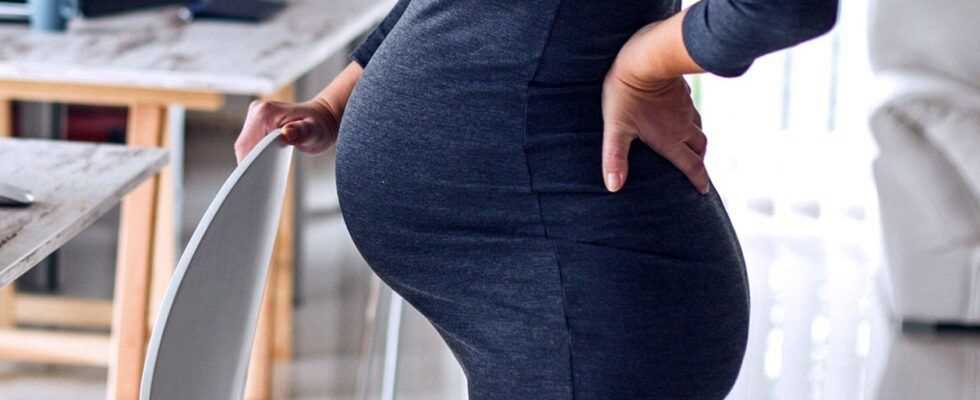Pregnant women and those who have just given birth are particularly used to traction pains in the pelvis. It radiates to the back or thighs and makes it almost unbearable to lie down, walk and stand. What is behind it? We take stock.
Just before giving birth, the female body goes through many fascinating, but sometimes painful, processes. For example, during birth, it releases hormones such as relaxin and progesterone to relax the ligaments in the pelvis and thus facilitate the baby's arrival.
This phenomenon is called loosening of the pubic symphysis, and can cause great suffering. The symphysis pubis corresponds to the joint connecting the two coxal bones, or iliac bones, at the front of the pelvis. Many women experience pain at this level during the last trimester of pregnancy or even after giving birth. This pain can spread to the back or even into the thighs.
How do pubic symphysis pains develop?
To facilitate the baby's passage during delivery, the entire pelvic region, including the pubic bone and the sacroiliac joints at the sacrum and ilium, are relaxed as preparation. This allows the fetus to have more space to exit the mother's womb.
If the enlargement of the pubic symphysis exceeds 10 mm, pain may appear. We then speak of a diastasis of the pubic symphysis.
"These complaints usually occur during pregnancy and are caused by loose bone connections and stretched ligaments", explains gynecologist Dr Norbert Scheufele.
The pain of the pubic symphysis is not only known to pregnant women. People who play sports regularly may also suffer from pelvic pain.
Is it really very painful?
Excessive relaxation of the pelvis can cause displacement of the two pelvic blades. Pregnant women especially feel the pain when they climb stairs or walk. But sitting and lying down can also become torture. Dr. Scheufele explains: "Pain is like that of a sore muscle". It can be more intense, but it also depends on the perception of pain for each person.
Testimony of a pregnant woman
Esther, journalist for the German version of the aufeminin site, tells how she experienced the pain of the pubic symphysis during her first pregnancy and what helped her:
“Before my pregnancy, I had never heard of symphysis, pain or relaxation of the symphysis. It was only when I spoke to a pregnant friend that she told me that she suddenly had severe pain in her lumbar region. She described the feeling "as if someone had punched her between the legs".
But until then, I couldn't really imagine what it was. Then it happened to me during my pregnancy, at 29 weeks. I suddenly had the feeling of experiencing enormous muscle pain in the most unpleasant place in the world. I could no longer walk or move properly. It was very embarrassing. And of course, nobody talks about this side effect of pregnancy, so you are not at all prepared for it.
I received advice from my midwife and my gynecologist. They knew the subject well. Contrary to what I thought, stopping all physical activity is not the thing to do. They advised me to do light gymnastics, to swim and especially to sleep with a pillow (nursing) between the legs to relieve the symphysis. I also had to avoid lifting heavy objects, sitting or standing for a long time, climbing stairs and making great physical efforts. I also had to avoid movements that could spread the pain. All of this has helped me and the pain is now very rare. "
How to fight against pubic symphysis pain?
Dr. Scheufele recommends the use of a pelvic support belt. It is a wide belt with velcro closure which is worn around the pelvis. "Acupuncture and pelvic floor exercises can also relieve pain", he explains.
When to see a doctor?
Do not hesitate to consult if you suffer from pain, especially if you are pregnant. Health professionals are there to help you. Dr. Scheufele also recommends it: "An examination by the gynecologist is advised in all cases".
Read also :
10 questions to know everything about pregnancy stretch marks
Licorice, a food to ban during pregnancy?
